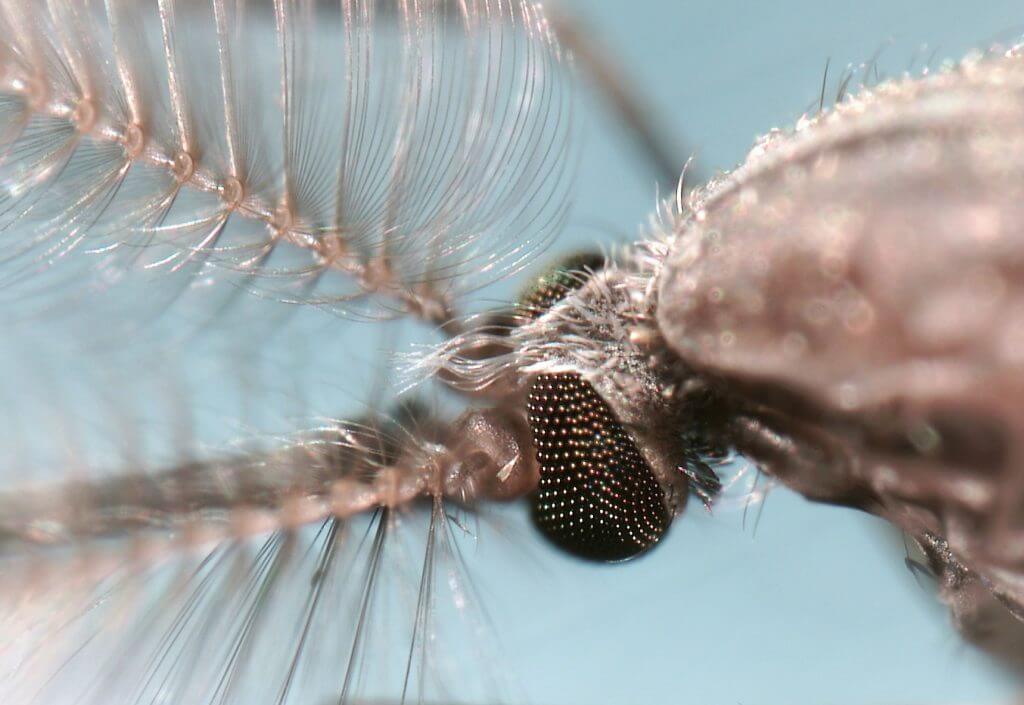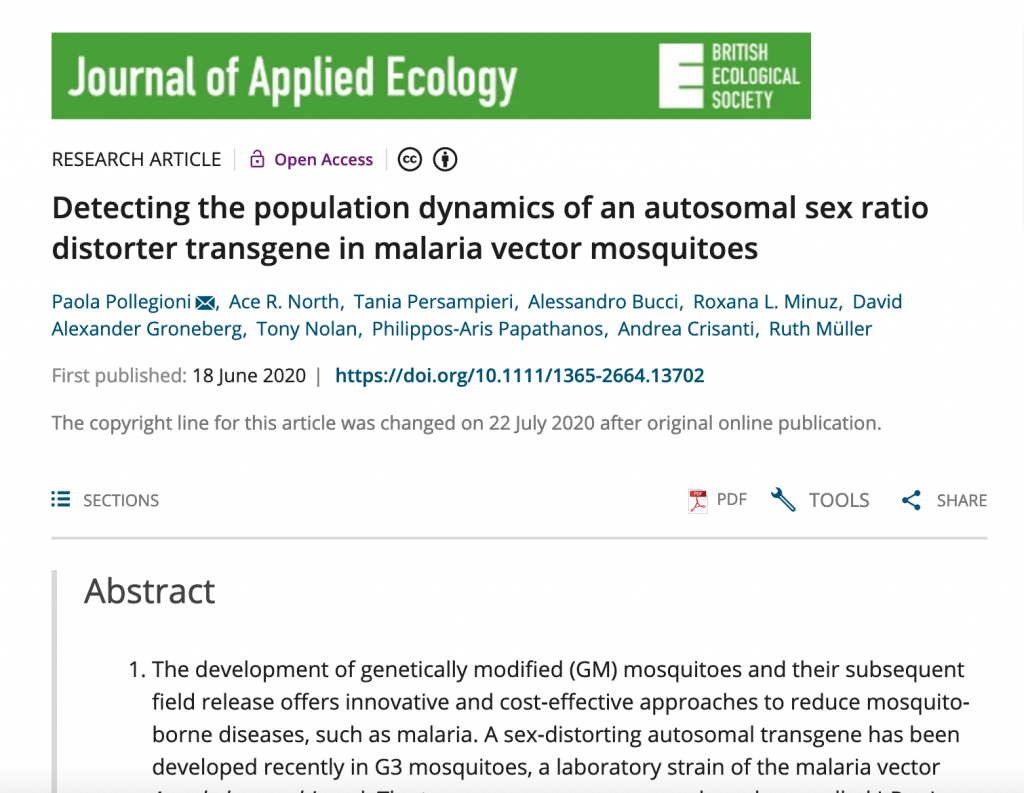Understanding the population dynamics of a self-limiting male bias strain in malaria mosquitoes

If we want to make malaria eradication a reality by 20502, innovation and new tools are essential, as suggested by the WHO and the Lancet Commission. Target Malaria is working to achieve this goal by developing novel genetic technologies to reduce the population of malaria mosquitoes in Africa. The project aims to develop genetically modified (GM) mosquitoes that would impact the density of mosquitoes by affecting their reproduction. As research progresses at the Crisanti Lab at Imperial College London, the teams at Polo of Genomics, Genetics and Biology (PoloGGB) in Italy are studying GM mosquitoes in laboratories that mimic the mosquitoes’ natural environment. They assess the population dynamics and they use mathematical models to predict the length of time during which the modified mosquitoes will persist in the population.

In collaboration with Oxford University and Imperial College London, the research team at PoloGGB in Terni just authored a new paper entitled “Detecting the population dynamics of an autosomal sex-ratio distorter in a malaria vector” in the Journal of Applied Ecology. This study provides a demonstration of the self-limiting nature of one of the GM mosquito strains developed by Target Malaria, the one including a sex-ratio-distorter transgene. The study shows that the modified traits of such mosquitoes are unlikely to persist in target populations for longer than a few years, regardless of target population size or rate of introduction of the alteration.
In 2014, the project developed and evaluated in small cages at Imperial College London a self-limiting mosquito strain modified to produce mostly male offspring, and hence biasing the sex ration of the mosquito population to males, who cannot transmit the disease. The modification is passed on to offsprings for only a limited number of generations and is thus self-limiting. The critical next step in the phased development pathway recommended by WHO for evaluation of self-limiting technologies was to examine population dynamics in large cages within semi-field environmental settings. This publication lays out the findings of such a study.

The authors established populations of wildtype mosquitoes in large cages intended to mimic a simple tropical environment, with a diurnal light cycle and constant temperature and humidity. These populations were then mixed with mosquitoes carrying the autosomal sex-ratio distorter transgene. A statistical model was created based on these experiments to estimate the persistence of the transgene, and the data collected was used to infer key fitness parameters.
The team found that all females who mated with transgenic males had around 20% lower egg production than those who had mated with wildtype males. The team further built on past large cage studies by identifying fitness costs associated with the transgene, namely reduced fertility in transgenic adult males and reduced pupal survival rates in their female offspring. In addition, modelling suggested that such a transgene would likely disappear from target populations in less than 3 years and that this would be true for a wide range of background population sizes and transgene introduction rates.
These results are extremely informative and the publication is an important step in demonstrating the power of mathematical models to estimate useful parameters of genetically modified mosquito strains and how those mosquitoes behave and persist in complex environments, such as large cage semi-field laboratories. These findings demonstrate that the Target Malaria team is making important scientific advances in the development of self-limiting strategies for vector control for malaria.

More details about these experiments are available in the Journal of Applied Ecology.
https://besjournals.onlinelibrary.wiley.com/doi/full/10.1111/1365-2664.13702?af=R
